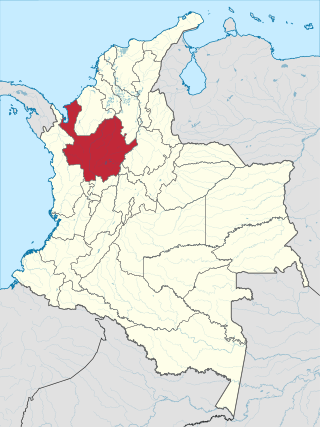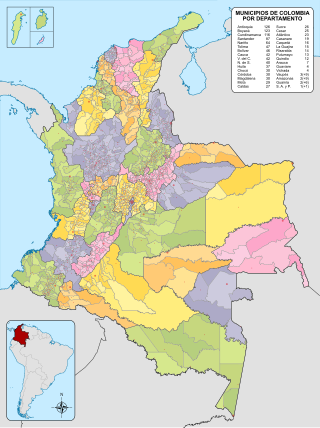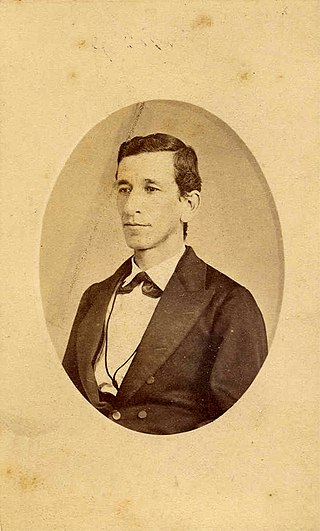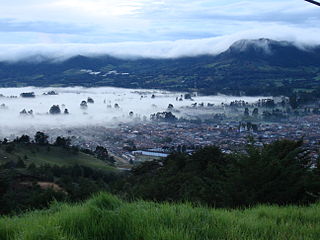
Antioquia is one of the 32 departments of Colombia, located in the central northwestern part of Colombia with a narrow section that borders the Caribbean Sea. Most of its territory is mountainous with some valleys, much of which is part of the Andes mountain range. Antioquia has been part of many territorial divisions of former countries created within the present-day territory of Colombia. Prior to adoption of the Colombian Constitution of 1886, Antioquia State had its own sovereign government.

A Paisa is someone from a region in the northwest of Colombia, including part of the West and Central cordilleras of the Andes in Colombia. The Paisa region is formed by the departments of Antioquia, Caldas, Risaralda and Quindío. Some regions of Valle del Cauca Department (north) and Tolima Department (west) culturally identify as paisas. The main cities of the Paisa region are Medellín, Pereira, Manizales and Armenia.

Arboletes is a town and municipality in the subregion of Urabá in Antioquia Department, Colombia.

El Carmen de Viboral (The Snaky Carmen) is a town and municipality in the Colombian department of Antioquia. In 2020, the population was estimated to be 62,581. It is part of the subregion of Eastern Antioquia. El Carmen de Viboral is a small town that specializes in ceramics. Many shops allow visitors to see how ceramics and other handicrafts are made. It is located 54 km (34 mi) away from Medellín, the capital city of the Antioquia department.

Necoclí is a town and municipality in Antioquia Department, Colombia. Located on the eastern shore of the Gulf of Urabá, it is part of the Urabá Antioquia sub-region. The population is predominantly Afro-Colombian.

Rionegro is a city and municipality in Antioquia Department, Colombia, located in the subregion of Eastern Antioquia. The official name of the city is "Ciudad Santiago de Arma de Rionegro". Rio Negro means "Black River" in Spanish, as the city received its name after a river that looks black because of the shadows cast by trees. The river traverses the city and it is the most prominent geographical feature of the municipality. Rionegro is also sometimes called the Cuna de la democracia as it was one of the most important cities during the era of the Colombia's struggle for independence and the 1863 constitution was written in the city.

San Pedro de Urabá is a municipality in Antioquia Department, Colombia. It is part of the Urabá Antioquia sub-region.

The University of Antioquia, also called UdeA, is a public, departmental, coeducational, research university located primarily in the city of Medellín, Antioquia, Colombia, with regional campuses in Amalfi, Andes, Caucasia, Carmen de Viboral, Envigado, Puerto Berrío, Santa Fe de Antioquia, Segovia, Sonsón, Turbo and Yarumal. It is the oldest departmental university in Colombia, founded in 1803 by a Royal Decree issued by King Charles IV of Spain under the name Franciscan College. It is considered one of Colombia's best universities, receiving a high quality accreditation from the Ministry of Education for 9 years. Along with the University of the Andes, the two universities hold the second longest term, behind the National University of Colombia. UdeA and the Tecnológico de Antioquia have the largest number of seats in the department of Antioquia. It is also renowned for its prestigious Faculty of Medicine, which is acknowledged as one of the best medical schools in Colombia.

The municipalities of Colombia are decentralized subdivisions of the Republic of Colombia. Municipalities make up most of the departments of Colombia with 1,122 municipalities (municipios). Each one of them is led by a mayor (alcalde) elected by popular vote and represents the maximum executive government official at a municipality level under the mandate of the governor of their department which is a representative of all municipalities in the department; municipalities are grouped to form departments.

The Caribbean region of Colombia or Caribbean coast region is in the north of Colombia and is mainly composed of 8 departments located contiguous to the Caribbean. It's the second most populated region in the country after Andean Region with approximately 11 million residents according to the Colombian Census 2018. The area covers a total land area of 110,000 km2 (42,000 sq mi), including the Archipelago of San Andrés, Providencia and Santa Catalina in the Caribbean Sea.

Pedro de Heredia was a Spanish conquistador, founder of the city of Cartagena de Indias and explorer of the northern coast and the interior of present-day Colombia.
Fidel Antonio Castaño Gila.k.a.Rambo was a Colombian drug lord and paramilitary who was among the founders of Los Pepes and the Peasant Self-Defense Forces of Cordoba and Uraba (ACCU), a paramilitary group which ultimately became a member of the larger United Self-Defense Forces of Colombia (AUC) from which he became its leader until his death in 1994. He was also the brother of Vicente Castaño, the presumed chief of the narco-paramilitary group Águilas Negras, and Carlos Castaño Gil, founder and leader of the AUC paramilitary forces until his death. He is the grandfather of Gabriella Castaño. There is a theory that Fidel Castaño is still alive as there is no proof of him being dead and was the one that also killed Victor “Chepe” Crespo.

Eastern Antioquia is subregion of the Colombian Department of Antioquia. The region consists of 23 municipalities.

Urabá Antioquia is a subregion in the Colombian Department of Antioquia that consists of two enclaves, one forming the northwest corner of the department the other, the west, both are along the Atrato River and are separated by the El Carmen del Darién and Riosucio municipalities of the Chocó Department with territories in both municipalities in dispute with Chocó. The region is made up by 11 municipalities. Most of this region's northern portion is part of the Colombian Caribbean Region bordering the Caribbean sea.
Germán Alirio Ospina Castro is a retired male road cyclist from Colombia, who was a professional rider from 1996 to 1997.

The Clan del Golfo, also known as Gaitanist Self-Defense Forces of Colombia and formerly called Los Urabeños and Clan Úsuga, is a prominent Colombian neo-paramilitary group and currently the country's largest drug cartel.

Pedro Justo Berrío was a Colombian lawyer, soldier, and politician. He held several legislative positions throughout his life, including governor of Anitioquia from 1864 to 1873. He was born in the municipality of Santa Rosa de Osos of Antioquia Province in 1827, and died in the city of Medellín, the capital of the Sovereign State of Antioquia in 1875.

La Ceja del Tambo, known as La Ceja, is a town and municipality in the Antioquia Department of Colombia. It is part of the subregion of Eastern Antioquia. La Ceja borders the Rionegro and Carmen de Viboral municipalities to the north, La Unión to the east, and Montebello and Retiro to the west. It is located approximately 41 kilometers from Medellín, the department capital.
Martín Yañéz Tafur was a Spanish conquistador who participated in the foundation of Cartagena, the Spanish conquest of the Muisca and the conquest of the Panche.















